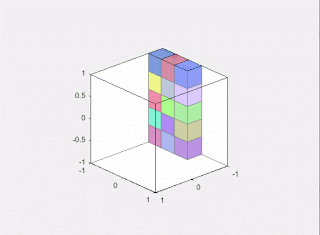Understanding Lumens, Lux and LightBulbs
How to stand under and under stand Your plant's lights
All the colours of light that humans see, are the same light that plants use to make photosynthesis. This light has two names, it is called "visible light" and P.A.R (Photosynthetically Active Radiation).
This is because, our eyes, like Eternal Father Noah's, are organic, and leaves are organic. We are all organic :) .
Organizing your Light bulbs to simulate the shady sunshine is simple, just add lots of lightbulbs to a light festoon rig.
Learning about units of light will teach you about how science only describes how you observe and manipulate the world, not the perfect truth.
The different measuring units of light are "lux units" , "candela units" and "lumen units" .
The sun shines on plants with 10,000 to 100,000 lux of light, (depending on cloud).
So simply, work out how many bulbs you need:
Step 1: check the cheapest infloresense screw at the shop
with the HIGHEST Lumens. (example infloresence
1400lumens.
Step 2: divide 10,000 by your bulb's lumens.
Step 3: ask an electrician to build you a festoon light- string with that Step 2 's amount of bulb holders.
So Add 10 bulbs in Parallel on a "festoon".
Step 4: for this to work like the sun, your lights must be less than 1 meter away from the plant leaf.
When you think of light, in quantum physics, you think
of the light leaving the electron, as a spherical wave
propagating outwards and in terms of intersection a single
particle moving in a straight line (shortest distance
between the source point and observer point) .
Candela
Any visible light source has a value of light, measured in candela.
The source itself is measured in "candela" , regardless of the "observer", it is akin to the
In that it is merely an abstract dimensionless number, without spatiality. Note that Candela only measures visible light sources, the P.A.R (Photosynthetically active radiation), not invisible light.

So even though candela is Lumens / steradians (luminousity divided by ratio of space), candela isn't related to space as a unit of light.
Lumens
Now, the Light bulb is measured in Lumens. Lumens are the amount of light in a cone of infinite height. Lumens are, again, an abstract unit (representative of nothing in reality). Lumens is measured as the candela (power of a bulb) times the steradian (angled coverage of the light). The reason Manufacturers measure their lightbulb in Lumens, is because they know the bulb's shape and all the different angles which their light-bulb will shine (lightbulbs don't shine up the socket). The manufacturers know where above the light socket doesn't get light, but they don't know how far their customer's lightbulb will be from any surface to use a real visible unit like "lux".

So you can make a lamp-shade that shines light on only a certain amount of space. That lampshade allows the same amount of lumens regardless of if the lampshade is in a box or a field, because of what lumens means , lumens is the brightness of light and also the access light has from the source.
But if you make a lampshade, then you must measure the steradians of that lampshade, and calculate the new Lumens of the lightbulb.
Lux
Lux is the amount of light that hits a surface. Lux is what we know and think of when we measure the strength of light that we can see.
If a light is faint or in the distance, it has a low lux value, and if light is very bright then it has a high lux value.
Lux equals Lumens divided by the illuminated-surface- area.
Because Lumens is always the same for it's given "cone" , the base of the cone depends on how far away the base is from the top of the cone. The "base" of the steradian cone, is the surface area which gets lighted up by the lightbulb.
So Lux depends on the distance or height of the lightbulb away from the lit-up surface.
So when you know the Lumens, you can measure the area of the surface which gets light and that is the lux. The sun gives lux of 100,000lx to the earth's surface on a sunny day. The sun gives lux of 10000lx light on a very cloudy day.

Steradians
Steradians are a dimensionless unit of angles.A ratio between the area you are measuring and the distance of the surface from your "source" (light source, perhaps) .
So you have a sphere, and at the surface of the sphere, is your plant surface that you are measuring.

Working out your lamp-shaded bulb's lumens
So you only need two measurements, the height which is the radius of your sphere, and the area in meters squared of the surfaceThe calculation for steradian, is :
(4 * pi * surface's_area) / (Height * Height * 4 * pi)
or steradians = surface-area / height^squared

Once you've worked out steradians of your shade, then
Divide lampshade_steradian by 2pi = lampshade non-shadiness.
and then
multiply the non-shadiness by your lightbulb's lumens.

This gives you the lumens of your bulb, so that you can work out the appropriate lux later.
(Remember in any case, your bulb should be less than 1 meter away from the plant leaves. )
Also note that if you make a lampshade out of reflective mirror/tinfoil, it will truthfully increase the lumens of the steradian hole, but because the sun is so much brighter than any bulb, it is better to underestimate the lumen of any horticultural bulb.


Comments
Post a Comment